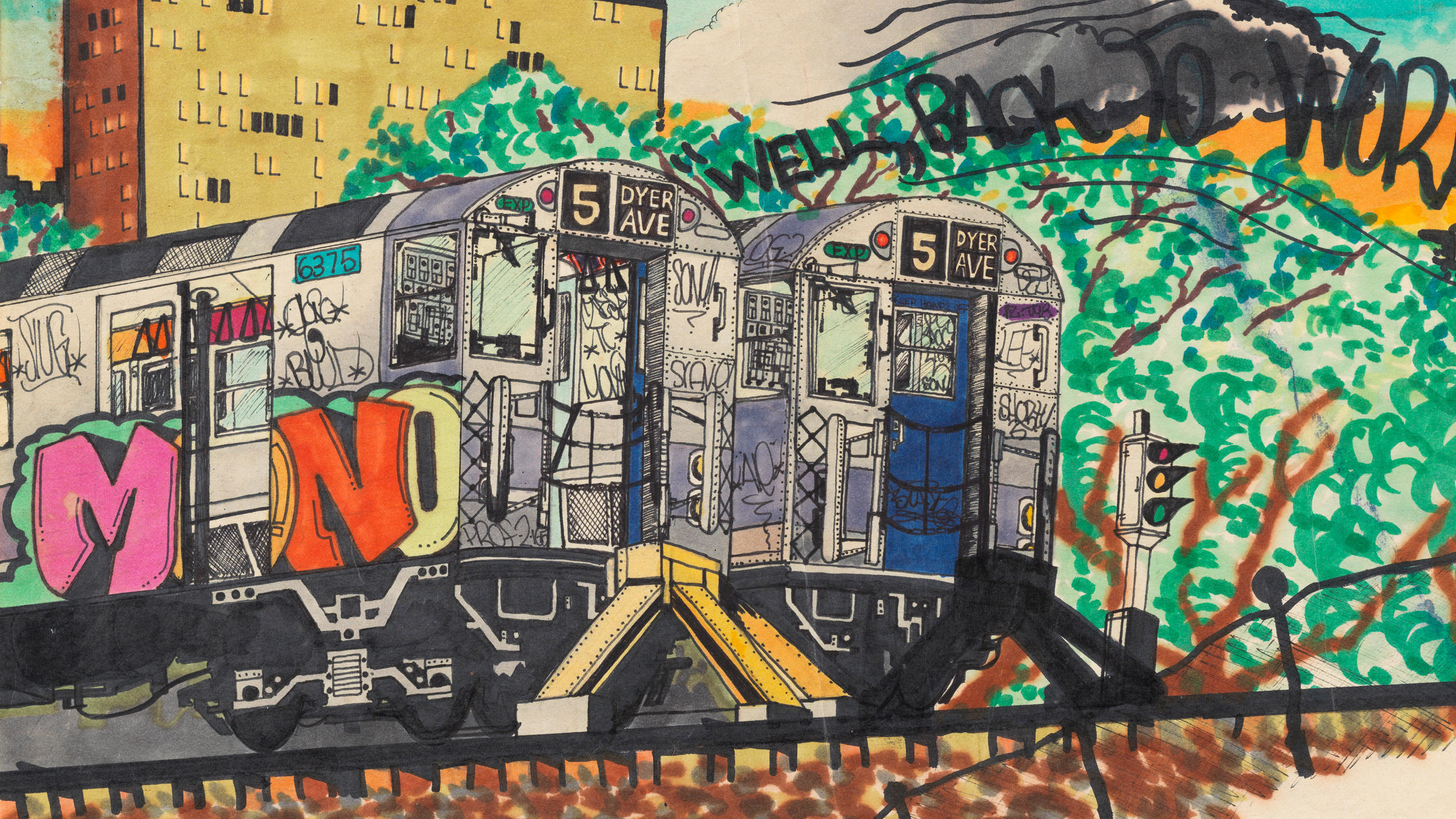New York’s modern age of graffiti — both notorious and celebrated — began in the early 1970s. The subculture created by the city’s youth came of age over the next 20 years, transforming into a new, consciously artistic movement. By the mid-1980s, alongside an emerging hip-hop culture, graffiti writing was recognized as both distinctly “New York” and a global art form.
On a parallel track to the art they created in the streets, many of these young people developed a traditional studio art practice. As early as 1972, they embraced the value of creating something tangible and permanent on canvas, while still channeling the raw creative energy of writing in public spaces and the associated tools of spray paint and indelible marker. In the 1980s, these artists became the darlings of the international art world, achieving fame and financial success that would have been unimaginable just a few years earlier. In fits and starts over the next several decades, their work grew in public acceptance and spawned a worldwide culture that remains omnipresent in commercial art galleries and the international urban landscape.

Much of the art in the Museum of the City of New York’s exhibition Above Ground: Graffiti Art from the Martin Wong Collection, curated by Sean Corcoran, comes from the collection of artist Martin Wong, who befriended these young artists and collected their work. Facing a diagnosis of HIV/AIDS and hoping to keep the work intact, he donated his extensive collection to the museum in 1994.
On view at the Museum of the City of New York through August 10, 2025, Above Ground is the second major show from this important donation, building on City as Canvas: Graffiti Art from the Martin Wong Collection on the tenth anniversary of that exhibition.
For more information, visit mcny.org.



Lead funding for Above Ground: Art from the Martin Wong Graffiti Collection has been provided by UNIQLO USA, with additional support provided by Elizabeth Belfer. Support for this exhibition is made possible by the New York City Department of Cultural Affairs in partnership with the New York City Council.


